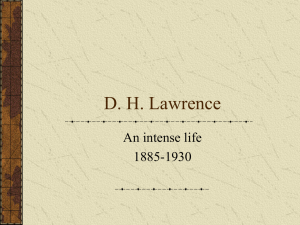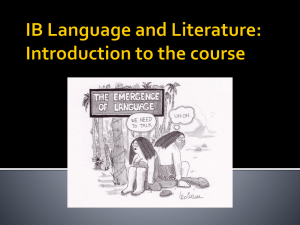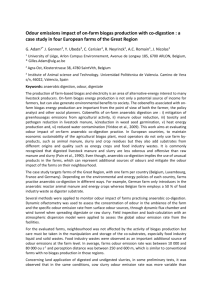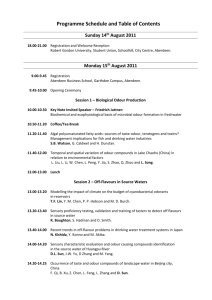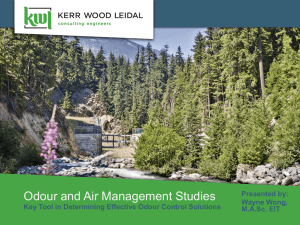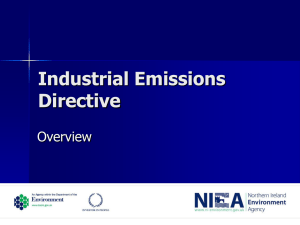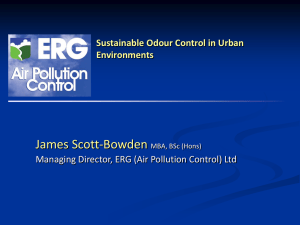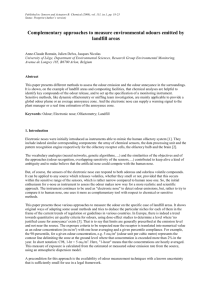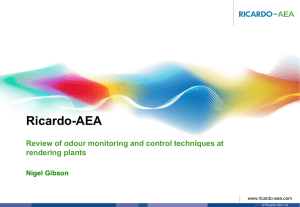PPT - GLAM Group for Literary Archives & Manuscripts
advertisement
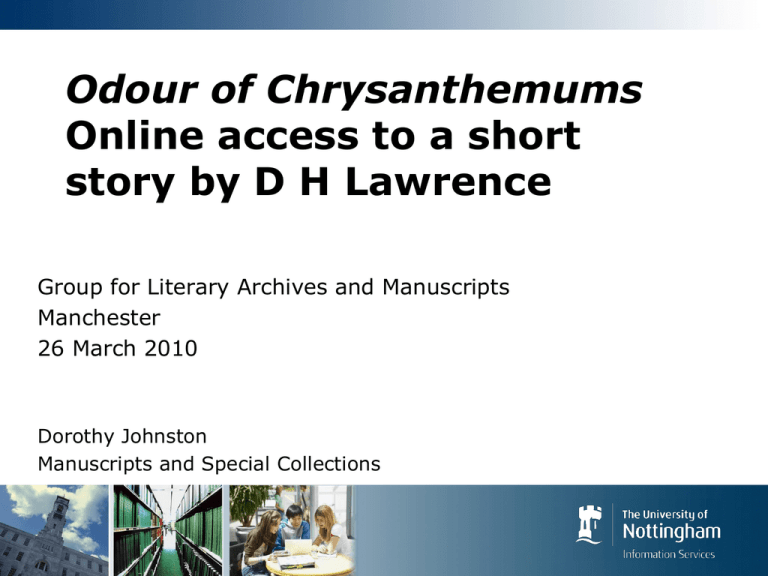
Odour of Chrysanthemums Online access to a short story by D H Lawrence Group for Literary Archives and Manuscripts Manchester 26 March 2010 Dorothy Johnston Manuscripts and Special Collections Introduction Digital access at Nottingham: Background The Odour project: Initial pros and cons Principal features What was achieved Questions and Lessons Digital access at Nottingham The holdings Manuscripts and Archives Special Collections (Rare Books) East Midlands Collection (local studies) Operation within converged services Benefits of digital infrastructure Close links with e-learning Early digitisation developments Project based Supported e-learning or awareness raising Focus on contextual added value, not images. Awareness raising 1. Online exhibitions Awareness raising 2. Spotlight on the Collections gallery Awareness raising: 3. Collection resource pages e-learning: Skills for Users e-learning: Academic Partners e-learning: Teaching Packs Lawrence project: Background Digital access to Lawrence regularly sought. Unsuccessful project bid (2000) plan provided a potential model and clarified objectives. Examined in “Issues in delivering primary source materials over the internet as resources for research and learning in the humanities” (E. Archer, MA thesis, University of Nottingham, 2004). English Subject Centre funding to Sean Matthews to deliver the text with supporting pedagogic materials for textual, historical and critical study (2005). D H Lawrence, Odour of Chrysanthemums Supporting factors Good subject for academic/curatorial collaboration Popular short story - widely taught, ‘canonical’ text Original sources, both for text and background Accessible textual history through critical materials Relevant to local and regional community identity Potential for outreach and local schools based learning D H Lawrence digitisation a long-term objective Proven delivery of e-learning by the team. Potential issues Copyright in text and other IPR issues Lack of technical or curatorial input to bid for funding Project management Capacity for technical delivery Capacity to research images, contextual enrichment Fitting academic drivers and timetables into curatorial operational pressures and existing projects NB: Other current activities included move of service to new accommodation. Development of Odour project: Principal anticipated features Aimed at both research and educational audience Deliver reading texts Guided comparison of texts, with notes Critical literature about Odour Background original material – letters Background secondary material – e.g. local context Images – photographs etc. School lesson plans e-learning: texts in transmission The sources Corrected proofs Comparing different versions Uncorrected proofs (1910) first publication (1911) First publication (1911) First collected edition (1914) Work with the texts: dialect Project elements delivered Reading texts Guided comparison of texts, with notes Working with the texts – for students Critical literature about Odour Further materials – e.g. map, photographs, article on “Talking Lawrence” Elements deferred Further potential elements but project creep resisted. Application of guided reading to all episodes Supporting original material from other parts of the collection – e.g. letters Local studies content – other than dialect Significantly greater quantity of images Focused school lesson plans in collaboration with specific school / teachers Audio content: reading Lawrence Supporting future similar projects Does it fit the digital strategy and plans? Who’s funding? And what is funded? Who’s managing? Does academic partner have dedicated time? Use proven methodologies or new developments? Timescales suiting curators, academics and developers? Complexities of IPR? Is it sustainable and extensible? Opportunities and constraints Tension between strategic digitisation plans and academic project opportunities New models of partnership are required Pilot projects need to deliver generic solutions Curators may aim to extend the brief and develop the resource further Audience focus (student/public etc.) may shift. If digital texts become surrogate collections, responsibility lies with curators. D H Lawrence Odour of Chyrsanthemums at the University of Nottingham http://odour.nottingham.ac.uk/index.asp dorothy.johnston@nottingham.ac.uk Manuscripts and Special Collections http://www.nottingham.ac.uk/MSS

